Errol Shaw – 24 March, 2017
The promotional statement accompanying the Suter's redevelopment stated: “We need an art gallery for the 21st century.” I would suggest that we also need an art gallery for art of the 21st century. An art gallery for this century needs to be cognisant of younger artists, new media, emerging art forms and alternative ways of thinking.
“IN 1899, A BRAVE GROUP OF INSPIRED NELSONIANS BUILT HISTORY. IN 2013, YOU CAN DO THE SAME. THEY BUILT AN ART GALLERY FOR THE 20TH CENTURY. WE NEED AN ART GALLERY FOR THE 21ST CENTURY.” With this bold lettering projecting a positive outlook for art in Nelson, the initial fundraising brochure for the ‘New’ Suter announced an entitled sense of history, along with the need to modernise the old art gallery. Accordingly, for nearly two years, the Suter Art Gallery Te Aratoi o Whakatū exhibited from temporary premises while the Nelson City Council and the Suter Trust Board completed a $12 million refurbishment.
Although I am beginning this article as a review of the three exhibitions heralding the Suter’s reopening, you will see that it soon develops into a more complex enterprise: one of trying to understand the Suter’s recent collecting and curatorial practices. Other than a few biennale-type exhibitions presenting a national view of contemporary art discourse, the Suter’s exhibitions in recent years have frequently centred around the popular subject of local landscapes. The published texts for these exhibitions has usually been restricted to biographical or geographical information, and for the most part, is notable for its lack of investigatory impetus, its superficiality and its theoretical sparseness. With this absence of criticality, the ability to question, engage or intelligently evaluate the curatorial practice becomes highly problematic, resulting in a series of ongoing, and at times, repetitive questions. Questions like: Do they intend to be an art gallery, or a picture gallery?
Last year in October, the Suter held a grand opening during which they launched their new book People, Places, Perspectives: Artworks from the Collection. At the same time the three main galleries exhibited selections from the permanent collection, mostly their familiar and frequently exhibited works. There was no recent art, no survey exhibitions, no emerging artists, no sense of contemporaneity, no challenges, no risks, and no worries. Only a missed opportunity.
Now that the opening celebrations are over, what remains? The smart building, with three main galleries, has some elegant and welcome bi-cultural design features, but how adequate is that design to effectively present the diversity of current art practice? The experience of roaming between the three exhibitions in their interconnected configurations, reading the three exhibition information panels, and viewing the exhibits is confusing, strange and frustrating. A key question is who wrote the three exhibition text panels and were they written by each exhibition curator? Who actually curated the diiferent shows anyway?
One wonders also if these three opening exhibtions (one of which was replaced in mid-February, and another will be at the beginning of April) generated any responses? Were there any reviews, local opinion pieces, or forms of documentation? There has been very little. Nelson’s local “glossy”, Wild Tomato (#123), featured a five page article “Grand makeover for our heart of art” and it was just that: the architectural features of the Suter prior to the art being installed. The next issue of Wild Tomato devoted two pages of photographs showing attendees at the grand opening. No mention of the exhibitions or any of the works. Similarly, the Nelson Mail featured the new Suter prior to the opening, accompanied by photographs of guests enjoying themesleves, but with no reviews.
To date, no review has appeared in Art New Zealand or Art News. The summer issues of both magazines featured the same full page advertisement advertising the Suter with a street-view photograph of the building - but no art. For the site you are reading now, EyeContact, Peter Ireland (2 November, 2016) wrote ‘Resurrection’, an essay outlining historical changes at the Suter Art Gallery. He focussed on the recent developments, not on the various exhibitions. Once again it was all about the building, its facilities, its history and its location. Not the art.
In the new building design, the two large galleries of the previous Suter have been reconfigured into three galleries. The result is that the galleries are now domesticated, genial spaces with generous openings and doors that annoyingly interrupt the walls. The carpeted floors severely restrict the possibilities of creating appropriate environments for presenting the diversity of contemporary art, while the gallery wall spaces, with their frequent physical interruptions, create challenges for installation artists and the configurations of some wall-based works. To cap it off, nine large plaques are inserted into the central floor areas, informing us of the original use of the site, for each one identifies the boundary of the “Matthew Campbell School Building Outline 1844.” These prominent circular memorials punctuating the floors will challenge any future floor-based installation.
In the introduction to People, Places, Perspectives, Suter Director Julie Catchpole makes reference to Bishop Andrew Burn Suter, the gallery’s namesake, and his dream of having a “Picture Gallery for the people of Nelson.” The new-look Suter website home page opens with, “Welcome to The Suter Art Gallery - where art matters,” yet judging by the opening and previous Suter exhibitions, and People, Places, Perspectives, it seems as if the idea of maintaining a conservative, low key, nostalgic “picture gallery” is actually the main focus of the Suter today, and not a vibrant and challenging contemporary art gallery - “where art matters“.
In an earlier Nelson Mail (December 30, 2010) article, “Artists’ paradise? Maybe not,” journalist Sarah Young questioned the myth of Nelson being an arts centre. Anna-Marie White, former Suter Art Gallery curator was quoted as saying of Nelson, “There is no critical discourse for art here - and there shouldn’t be.” She also added, “There is a defined perception of the kind of art produced here - it’s nice, it’s commercial, it’s not avant-garde” thereby identifying a dominant conservative culture.
The Biblical titles chosen for the three opening exhibitions, Milk and Honey, Promised Land and Exodus implied a grand scenario not evident in the shows. By comparison, The Promised Land: Art in Nelson from Tasman to Today (a two-part Suter exhibition curated by William McAloon in 1999 as part of the Suter centenary celebrations) included some outstanding works, particulatly in Part One. Some of these were sourced from other galleries, including Colin McCahon’s The Promised Land (1948), mystifyingly absent from the current offering, despite the shared use of its title.
The Milk and Honey exhibition wall text stated: “Each of these artists explored the geological wonders that the region has to offer and created some of their most iconic work as a response to what they saw.” The wall text also stated that the exhibition “is just a taste of the creative endeavours this distinctive area has inspired.”
Francis Pound’s book Frames on the Land: Early Landscape Painting in New Zealand (1983) provides an alternative framework from which to interpret similar paintings from the Suter Art Gallery collection. Pound argues that different European artistic conventions became ‘frames’ through which the early images of the New Zealand landscape was interpreted - the painting is not a ‘window to the world’ but rather a painted image articulated by the painter. He identifies the dominant genres such as the topographical, the sublime, the ideal landscape, the picturesque and impressionism. Pound states:
The genres expect themselves to be recognised. They may give on to the world, on to nature, but they label themselves, admit themselves to be one kind of window or another. Always, painting announces itself as painting, by various devices. The genre, however, announces itself to the spectator, not just as painting in general, but as a specific style or kind of painting, and no other.
Looking at her curatorial context, Julie Catchpole has curated at least four landscape exhibitions, selecting works from the Suter collection. They shared a general focus on geographical representation, pictorial and scenic locations. The wall text for her exhibition Wish You Were Here: Views of Golden Bay, Abel Tasman and Kahurangi National Parks (2012) introduced the exhibition with, “This exhibition comprises works from The Suter’s collection that depict the scenic beauty of the two National Parks, Abel Tasman and Kahurangi, that bound Golden Bay and Motueka.”
In contrast, any discussion about Pound’s thesis, for example, or any other alternative interpretation, has been absent from the Suter-curated landscape based exhibitions over the last decade. Since Toss Woollaston, the landscape tradition has been a Nelson mainstay: the pictorial and scenic genres being popular and simpatico with the tourist industry.
Exodus features some of their recent acquisitions, but nothing here is really that new. L. Budd’s There - here (1999), Jim Speers’ K. C.’s Smokes Again (1999) and Ronnie van Hout’s Sick Child II (2006) are all from the successful early Goodman-Suter Art Projects, but, unfortunately they are unsympathetically presented. There - here as a two part work is located in a corner with the space between them being greater than the distance between them and the adjacent Israel Birch work. It is easy to misread them as three separate works. Stabilising Sick Child II on the carpeted floor by raising it onto a slightly elevated white painted board feels inappropriate. In its original presentation, as reproduced in People, Places, Perspectives, the figure stood on a wooden floor, occupying the same surface, the same space, so as to confront the viewer.
People, Places, Perspectives, with a preface by Craig Potton, is the first in a series of books promoting the Suter collection: the good, the not so good, and the others. It is, essentially, a picture book.
Potton has quite a presence at the Suter. As stated on the new website he has four positions on The Bishop Suter Trust: as their Chairperson; Chair of the Collections Committee; Chair of the Marketing and Promotion Subcommittee; and Chair of the Legacy and Fundraising Subcommittee. His ‘Preface: Seeing ourselves, seeing our land,’ provides very little information, except for his opening paragraph - an account of his father’s meeting with Colin McCahon and Toss Woollaston, some seventy years ago on the Mapua wharf. This encounter was also mentioned in the catalogue which accompanied the exhibition Icons of New Zealand Art: Selections from the Craig and Catherine Potton Collection which took place at Mahana Art in 2015. That exhibition included a selection from his personal art collection, together with his own landscape photography, and art works (for sale) from his privately owned gallery. The same story was repeated again in a review of that exhibition published in Nelson Mail (August 27, 2015.)
Potton’s preface largely consists of his thoughts on art. These include: “Art helps us ask, and sometimes answer, important questions.“; ”Our hope is that The Suter exhibitions create moments of dislocation. However you look at it, art can be a process of enlarging one’s sensibility and that can be a sometimes difficult, but ultimately rewarding, experience.“; “Art is a way we both celebrate and condemn our behaviours. Furthermore, great art helps us to redeem ourselves, to hint at ways that point to a better future.” These enthusiastic statements about art helping us think provide little insight into understanding the Suter collection or its exhibition policies.
Leonie Hall in her article, ‘Future Suter’ for Wild Tomato (#86), describes how four new Suter galleries are designated to exhibit different styles of art. She interviewed Dame Ann Hercus, the Suter Redevelopment Project Fundraising Coordinator, and Potton himself about the Suter redevelopment and reported: “The new facility will be largely single-level and have four gallery spaces - one for the permanent collection, a gallery for work that is ‘a little bit avante garde [sic], questioning and a little bit racy’, a gallery for ‘art that delights’ and a smaller contemplation space.”
If the Suter is planning to continue with the intended designation of these galleries I envisage the Bishop Suter Memorial Gallery would focus on the permanent collection, the Potton Family Gallery would be the “little avant garde” room and the Ann and John Hercus Gallery the nominated space for “art that delights.” The three exhibitions recently on display at the Suter tended to merge with no real sense of difference: it was one amorphous collection of scattered works. In Exodus it was difficult to consider Max Gimblett’s Spine (1984) or John Walsh’s Sports Day at Okorohanga Terraces (2002) as being “a little bit racy,” nor, do the works purport to demonstrate the “notion of dislocation” as stated on the Exodus text panel.
The Exodus wall text continues: “The Suter’s engagement and collection of contemporary art over the last three decades has been made possible through the Goodman-Suter Biennale, The Suter Legacy Group, the 10 x 10 and 5 x 40 Suter Acquisition Funds, as well as the generosity of individuals and organisations that donate artwork to the collection. Their generosity and unflinching acceptance of often difficult artworks has meant that the Suter has collected examples of some of the best contemporary art in the country.”
Other than the works purchased from the first four Goodman-Suter Biennales, what is there to help this comment be taken seriously? We need to look at how the Suter presents itself to Nelson and the rest of New Zealand, in terms of the wider context of contemporary New Zealand art and visual culture. In contrast, let’s look at say, the Govett-Brewster Art Gallery. They are clear about their position, as stated in their promotional advertisements (Art + Object Important Paintings and Contemporary Art 94): “We believe the point of art is to challenge people’s perceptions. To challenge them. Not to gently nudge them. Art isn’t mild… Art isn’t polite. Art punches, screams and kicks. We are the Govett-Brewster. Provocateurs since 1970.”
Where does the Suter want to position itself in the 21st century? Will it adopt a critical position similar to that of the Govett-Brewster, or does it want to focus on conservatism and predictability by keeping its eye firmly focused on the past? It articulated its acquisition proposals in the Future Directions December 2006 Proposed Acquisitions Policy, aiming to “concentrate on seminal works of the highest quality by recognised and critically esteemed New Zealand and regional artists.” One of the four bullet points aspires, “To actively acquire works that explore the theme of ‘dislocation.’” The ‘dislocation’ theme is reiterated on the Exodus wall text - its use appears to identify “edgy” work for the collection.
In the Suter Newsletter for May 2016, Suter supporters were asked for financial help in purchasing Euan Macleod’s Rocks and Snow (2012) for $40,000. The newsletter stated: “The art work is a great gallery-scale painting and it appeals for all sorts of reasons; tramping and climbing in New Zealand, or as a metaphor for onwards and upwards whatever the obstacles or risks.”
Julie Catchpole and Julia Warren wrote the accompanying artist texts for People, Places, Perspectives. When preparing these, Judith Ritchie reported in the Nelson Mail (September 29, 2016) that “they were under strict instructions from publisher Robbie Burton to keep the text accessible.” Catchpole said “We weren’t allowed to write too much art speak, which opens the way for people while still being authoritative [….] Let’s hope the book gets people curious and they will want to find out more,” while Warren noted: “It’s a visual history in that I see Nelson through these paintings, all the recognisable scenes from the Boulder Bank to Takaka Hill.”
The writers of People, Places, Perspectives have discussed people, places, personal thoughts and anecdotes, yet have added nothing to contemporary art discourse nor presented an alternative perspective. It is revealing that all New Zealand secondary school students studying NZQA level 3 art history are expected to answer questions such as: “Construct an argument based on interpretation of research in art history,” “Examine the relationship(s) between a theory and art works,” and, “Analyse texts about art.” What sort of questions are being asked of the Suter’s visitors?
Graeme Cornwell, formerly an art theory lecturer at NMIT, recently wrote an article for Watercoloured (#8), a Nelson-based journal of arts and cultural inquiry. This article, which explored the problems of tertiary art education in a neo-liberalist culture, was titled ‘As Stupid as a Creative: Art Education in New Zealand’. Here is Cornwell’s answer to the hazards posed to arts education by neoliberal culture. “Simple. Increase critical thinking courses at all costs. Inform students about the importance of academic skills to their future. Engage the student in contesting inherited ideologies and providing critical thinking tools to enable them to be creative producers of culture.”
The promotional statement accompanying the Suter’s redevelopment states: “We need an art gallery for the 21st century.” I would suggest that we also need an art gallery for art of the 21st century. An art gallery for this century needs to be cognisant of younger artists, new media, emerging art forms and alternative ways of thinking.
Grant Palliser, a secondary school art teacher in Nelson, wrote ‘The changing context of art’, an insightful article concerning art education in Nelson Mail (June 1, 2005). In it he says:
Contemporary art education in our schools is not necessarily about turning out scores of artists, as well as developing their creative and decision-making skills, it is about aiding the students to be consumers of art, of contextualising the past, and of not just knowing what they like or dislike, but of understanding why. They will become more discerning in all aspects of community and perhaps less receptive to ill-considered influences…
…The positioning of art and its accessibility has changed. It is not the domain of the elite, and as such, the role of art galleries has changed with it. What we must ensure is that the developments surrounding the Suter gallery are an investment that meets the needs of our younger generations for they are the gatekeepers of the future. It is all a question of mindset.
What does the Suter hold for younger and future generations? Is its vision forward or backward looking?
The Suter may be a local public art gallery but it clearly has a place at a national level. Its purchases of recent and modernist art over the last eight years have tended to be safe, predictable, lightweight and conservative, or (and) very expensive. I find it difficult to agree that the Suter has achieved what was outlined in their 2006 Future Directions Proposed Acquisition Policy: “The intellectual value of the collection is increased through judicious acquisitions, research, interpretation and exhibition.”
If it is accurate that “There is no critical discourse for art” in Nelson, then Craig Potton raises an important question in his aforementioned preface: “How will those in the future look back on us and The Suter Art Gallery of today?” Interesting times ahead.
Errol Shaw
Recent Comments
Peter Ireland
Shaw raises some timely questions relating to the Suter's operation. As he rightly pointed out, my earlier piece on this ...
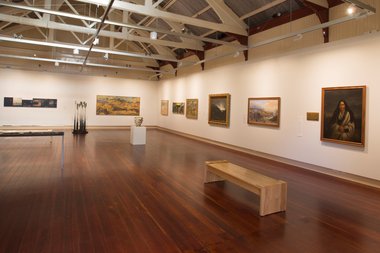
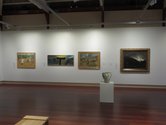
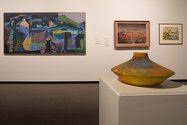
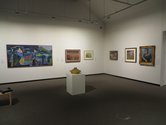
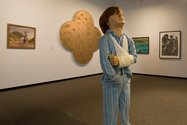
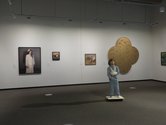
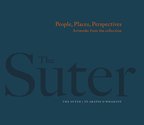
 Two Rooms presents a program of residencies and projects
Two Rooms presents a program of residencies and projects Advertising in this column
Advertising in this column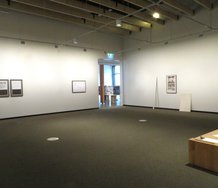
This Discussion has 1 comment.
Comment
Peter Ireland, 12:29 a.m. 26 March, 2017 #
Shaw raises some timely questions relating to the Suter's operation. As he rightly pointed out, my earlier piece on this site soon after the gallery's re-opening concentrated on the nature of the building and that was always my sole focus. I visit Nelson too infrequently to comment on the Suter's exhibition programme or acquisition policies. I do know, however, that a loan arrangement for McCahon's The Promised Land had been in place for the opening exhibitions, but the Auckland Art Gallery cancelled it at virtually the last minute.
Participate
Register to Participate.
Sign in
Sign in to an existing account.